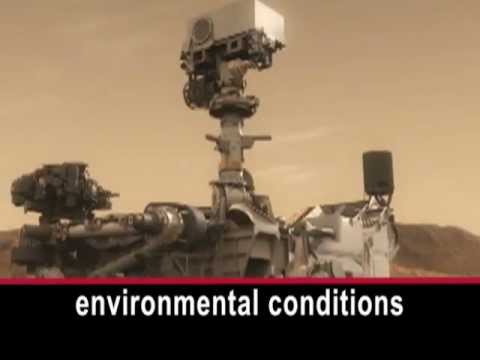Curiosity Rover: 'A Mars Scientist's Dream Machine'
 |
From voaspecialenglish.com | facebook.com/voalearningenglish
The American space agency launched its Mars Science Laboratory, also known as Curiosity, in November of 2011. The car-sized vehicle is supposed to land on Mars in August 2012.
This computer model shows what scientists expect will happen when the spacecraft carrying Curiosity reaches the red planet.
Curiosity is supposed to land at the foot of a mountain within a deep, 150-kilometer-wide hole called Gale Crater. Deputy project scientist Ashwin Vasavada tells about Curiosity.
ASHWIN VASAVADA: "This is a Mars scientist's dream machine. We're so excited to have this rover going to Mars this year. It's going to be the virtual presence for over 200 scientists around the world to explore Mars and Gale Crater that we'll talk about. This rover is not only the most technically capable rover ever sent to another planet, but it's actually the most capable scientific explorer we've ever sent out."
Curiosity is much larger than earlier rovers. It can travel up to about 200 meters a day over the Martian surface. It has a plutonium-fueled nuclear reactor that will provide plenty of power for Curiosity's many activities. The vehicle also has 17 cameras, and a laser that can examine the chemical make-up of rocks.
ASHWIN VASAVADA: "What really dominates the design of this rover is the fact that it has this ability to sample rocks and soils on Mars for the first time, and so it has a big six-foot [1.8 meter] robotic arm. And the rover is partly that big because it holds two very capable scientific laboratories inside the rover."
Vasavada says one instrument measures the minerals in rocks and soil. Another looks for chemicals and any organic material that might be present.
The goal of the $2.5 billion experiment is to learn if Mars ever had environmental conditions that could have supported microorganisms.
ASHWIN VASAVADA: "This mission is really about looking for those habitable environments, and not detecting life itself."
Vasavada says the mountain within Gale Crater will provide plenty of information about the development of Mars. That is because each layer of rock contains new clues.
ASHWIN VASAVADA: "It has some geologic evidence that water was around. We hope, in fact, to search for organics with this mission. That's another requirement for life as we know it."
The nuclear reactor on Curiosity has enough power to operate on the surface of Mars for about two Earth years, which is the same as one Martian year. I'm Faith Lapidus.
|




